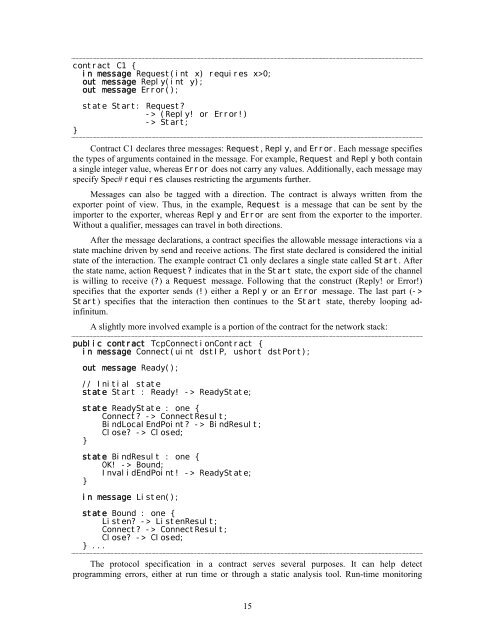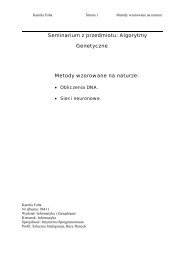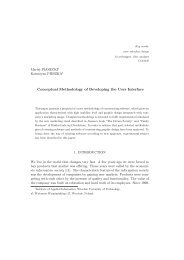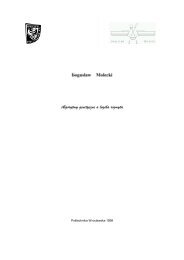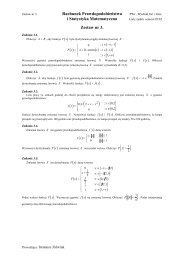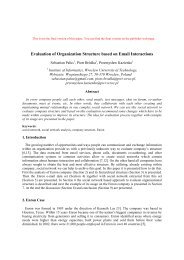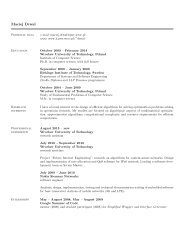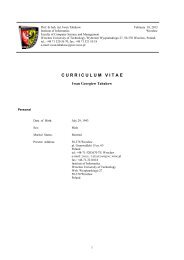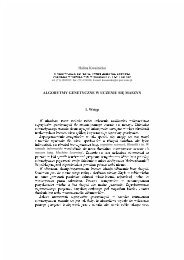Technical Report - Microsoft Research
Technical Report - Microsoft Research
Technical Report - Microsoft Research
You also want an ePaper? Increase the reach of your titles
YUMPU automatically turns print PDFs into web optimized ePapers that Google loves.
contract C1 {in message Request(int x) requires x>0;out message Reply(int y);out message Error();}state Start: Request?-> (Reply! or Error!)-> Start;Contract C1 declares three messages: Request, Reply, and Error. Each message specifiesthe types of arguments contained in the message. For example, Request and Reply both containa single integer value, whereas Error does not carry any values. Additionally, each message mayspecify Spec# requires clauses restricting the arguments further.Messages can also be tagged with a direction. The contract is always written from theexporter point of view. Thus, in the example, Request is a message that can be sent by theimporter to the exporter, whereas Reply and Error are sent from the exporter to the importer.Without a qualifier, messages can travel in both directions.After the message declarations, a contract specifies the allowable message interactions via astate machine driven by send and receive actions. The first state declared is considered the initialstate of the interaction. The example contract C1 only declares a single state called Start. Afterthe state name, action Request? indicates that in the Start state, the export side of the channelis willing to receive (?) a Request message. Following that the construct (Reply! or Error!)specifies that the exporter sends (!) either a Reply or an Error message. The last part (->Start) specifies that the interaction then continues to the Start state, thereby looping adinfinitum.A slightly more involved example is a portion of the contract for the network stack:public contract TcpConnectionContract {in message Connect(uint dstIP, ushort dstPort);out message Ready();// Initial statestate Start : Ready! -> ReadyState;state ReadyState : one {Connect? -> ConnectResult;BindLocalEndPoint? -> BindResult;Close? -> Closed;}state BindResult : one {OK! -> Bound;InvalidEndPoint! -> ReadyState;}in message Listen();state Bound : one {Listen? -> ListenResult;Connect? -> ConnectResult;Close? -> Closed;} ...The protocol specification in a contract serves several purposes. It can help detectprogramming errors, either at run time or through a static analysis tool. Run-time monitoring15


